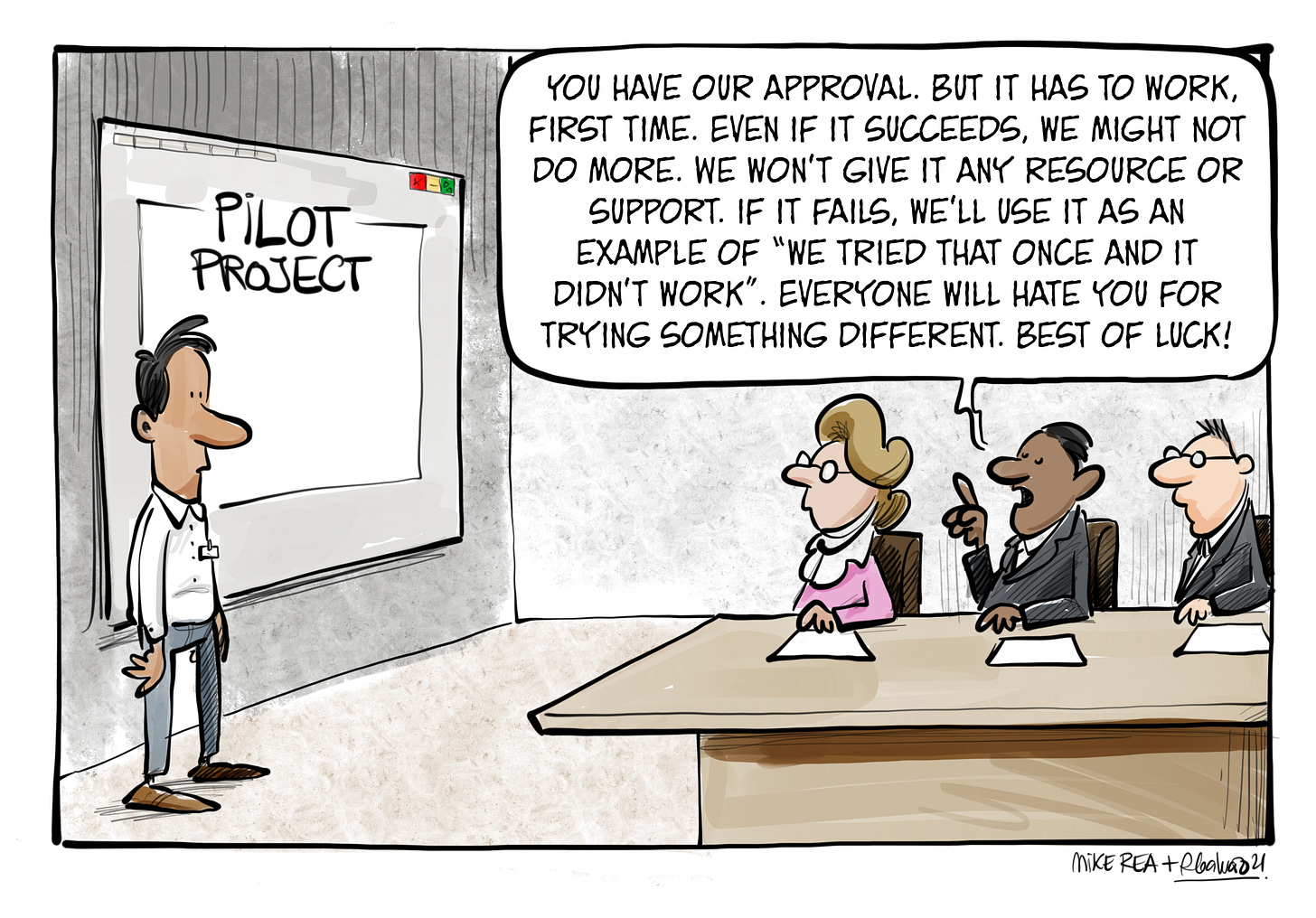The pilot mindset
To load up a pilot with success/ fail criteria is already a fail...
What's a pilot for? To find out if something works or not? Or to learn something that you can't learn by thinking...?
The idea of the pilot is to use it as a test flight. Therefore, setting it up to learn as much as possible is the only sensible approach.
However, companies often fall into two behaviours: the worst is that they never run pilots at all, because things are working so well already. The other is that their pilots are set up to not fail - experiments to see if something works or not, not to find out how it could work better. That mindset informs the way that phase I, phase II and phase III are set up too, in more traditional companies, so perhaps it is unsurprising.
The Asymmetric Learning mindset is that pilots are experimental - to put as many ways of learning as possible into the project (what does leadership want, how did the team find it, did it deliver what was hoped, and if not, why not?..., etc). So to load up a pilot with success/ fail criteria is already a fail.
Embracing pilots is a key behaviour of an innovation-oriented company. We describe it as opportunity-seeking behaviour. Great companies know that sometimes you can only learn by doing. But 'doing' in a particular way - to understand why something did work, or understand why it might not have, is critical. With that knowledge, you're in a place that the no-pilot companies couldn't be. What is also a key behaviour is conducting those pilots in the right spirit. Typically, as I've written before, people don't need a process to be more innovative, they need permission. If a pilot is succeed or fail, the predominant motivation will be to avoid failure. So, easier wins will be sought. Why would you try too hard to do something meaningful if you'll be dinged for failure, and barely rewarded for a success?
If you're not excited by, or made anxious by, your pilots in development right now, you're doing the wrong ones, or doing it the wrong way.


